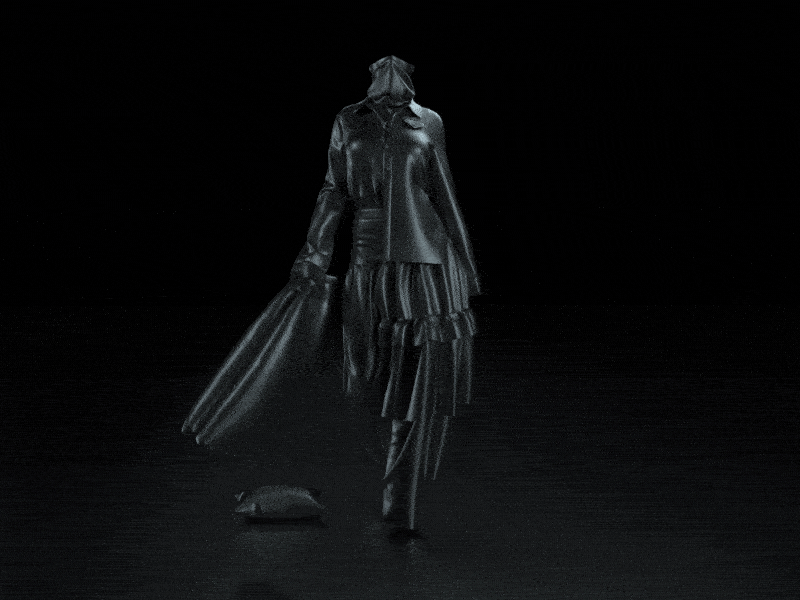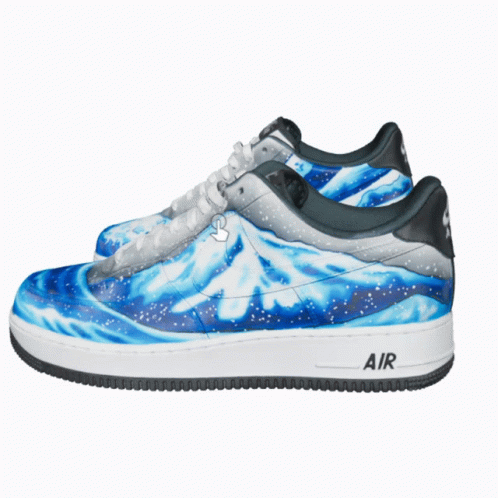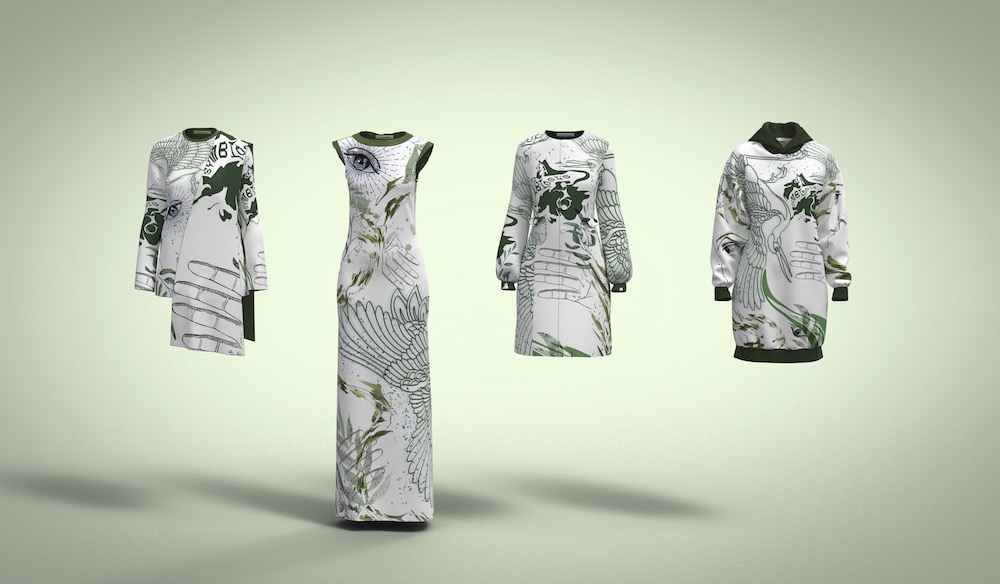Wearable NFTs: Everything You Need to Know
Wearable NFTs are the latest trend in the fast-growing and exciting non-fungible token market, but why are people spending real money to buy so-called “wearable NFTs”?
Forget about showing off luxury brands in the real world. NFT Wearables allow you to flex within the virtual world! If you want NFTs that you can wear daily, you’ll need some NFTs that you can wear. Not you, exactly, but your digital avatar.
Nowadays, more and more people want to be seen and show off in the virtual world, just as they do in the physical world. What better way to express yourself than through fashion? The clothes we wear, whether physical or digital, communicate who we are, and which brands we choose to associate with to the rest of the world. The market for NFT wearables will be enormous eventually.
What Are Wearable NFTs?
To grasp the concept of wearable NFTs, we must first examine the NFT space. There are currently several open virtual worlds on the Ethereum blockchain, such as Decentraland and Cryptovoxels, that are collectively referred to as the Metaverse.
Within these blockchain-based worlds, users can attend events, meet with friends, play games, and purchase a variety of NFTs, including name NFTs, virtual land NFTs, and-you guessed it-wearable NFTs.
While land NFTs provide the owner with virtual world space that they can lease, build, or resell to another party, name NFTs can be used to name your digital avatar or as a payment address.
Simply put, wearable NFTs are pieces of virtual or digital apparel, footwear or accessories like dresses, shirts, jeans, sunglasses, or bags that you can use to dress-up your avatar in a virtual world. They are the virtual wardrobe for your virtual life.
These digital-only designs are made possible by blockchain technology and smart contracts, which help to prove the uniqueness, authenticity, and ownership of each garment or accessory. In essence, the technology creates digital scarcity while enabling a slew of benefits. Given the very real problem of counterfeiting, it’s only natural that fashion NFTs have garnered a lot of attention recently. After all, customers willing to pay US$4,000 for digital luxury bags will want to ensure they aren’t paying for a fake, even if it is only a virtual one.

While the idea of spending money on clothing that does not exist in the physical world may be perplexing to many, wearable NFTs are generating real sales in the metaverse, where people can walk around, congregate, play games, and attend events. More brands pour their creative efforts into designing wardrobe collectibles made in collaboration with celebrities and public figures.
Virtual clothing has been available in gaming and real-life simulators such as The Sims and Second Life for well over two decades. So, the metaverse simply takes it a step further by allowing users and creators to have a more personalized experience and explore their self-expression in ways that were previously unimaginable.
Wearable NFTs, in other words, provide a new way to express yourself, as an individual piece of walking art that can also be worn as a status symbol. They will benefit from brand awareness and scarcity in the same way that digital scarcity is changing the way creatives monetize their art and music.
Be Prepared: Wearable NFTs Are on Their Way
Early this year, crypto natives, collectible lovers, and speculators rushed to purchase this new type of asset that represents ownership of unique virtual or physical items.
Wearable NFTs are attracting the attention of some of the world’s largest fashion companies, who want to capitalize on the space to market their products.
Luxury brands have taken notice of the potential of digital couture, which, according to some estimates, could become a $56 billion market by 2030. Last year, Louis Vuitton launched its own metaverse game in which players could collect NFTs, while others, such as Burberry, have sought lucrative partnerships with metaverses such as Blankos Block Party and Roblox.
These early forays into the metaverse were so successful that a slew of other brands, including Adidas, Nike, GAP, and Crocs are jumping on board and providing customers with virtual wardrobes.
The most intriguing aspect of wearable NFTs and shopping in virtual stores is that you can have a more immersive brand experience by exploring the metaverse, regardless of whether you are purchasing an online avatar or physical products that can be delivered to your door.
Wearable NFTs, according to supporters, could also reduce the waste of customers purchasing clothes to wear on social media. NFTs can also be used as a token to obtain a real-life version of physical fashion products.
Already, digital artists, big brands, and crypto exchanges have created wearables for the metaverse. Expectations are high that more big brands will join in and start offering wearable NFTs for people to show off in the metaverse.

What Makes Wearable NFTs So Special?
At the end of the day, we want to dress in the metaverse just like we do in the real world. Wearing a digital dress or a pair of NFT sneakers can feel like an extension of our physical identity or a new outlet for us to reinvent ourselves. But why is the concept of wearable NFTs so appealing? Here are a couple of examples:
Infinite creativity
Fashion, in many ways, transcends fabric. Without the constraints of the physical world, such as gravity or material durability, digital fashion can soar to new heights. Garments can be made of impractical, if not impossible, materials such as liquid gold, water, fire, or smoke. This one-of-a-kind blank canvas allows for original and eccentric creations.
More inclusive fashion
You won’t have to worry about being too big or too small to fit into a garment you really want to try on in the metaverse. Wearable NFTs are, in theory, intended to be non-discriminatory, catering to the specificities of the avatars regardless of body shape or size. Furthermore, there are several new brands that are focusing solely on genderless digital-only creations.
Accessibility
Most of us can relate to desiring a specific design but being unable to afford it. Wearable NFTs not only keep fashion fresh and unique, but they are also reasonably priced. This provides access to all types of metaverse users. Accessibility also extends to new designers, who will have a better chance of breaking into a world that can be difficult to break into in the real world.

Availability
Designers will never run out of fabric or samples in a virtual environment, and supply issues will be a thing of the past. This adds another layer of power and creativity to creators, allowing them to work with limitless possibilities.
New business models
Designers can experiment with new monetization models using wearable NFTs, such as becoming co-owners of their creations or embedding royalties into them so that every time an NFT changes hands, the creator automatically receives a percentage of the sale.
Waste reduction
One of the most serious consequences of fast fashion has been the negative environmental impact, with tons of discarded clothing dumped into landfills around the world every day. Wearable NFTs are marketed as an environmentally friendly alternative, emitting 97% less CO2 than physical items. Furthermore, producing digital garments eliminates the need for raw materials, transportation, factories, or labor costs, making it an ethical method of producing fashion. However, it is worth noting that NFTs have their own carbon footprint.
Brands and Marketplaces for Wearable NFTs
Gaming is a tried and tested platform for virtual fashion. Players frequently improve their gaming experience by purchasing add-ons such as new weapons, superpowers, cosmetic upgrades, and “skins” for their virtual avatars. Game skins already account for an estimated $40 billion in annual revenue, highlighting the potential of wearable NFTs. Fortnite, for example, made $50 million from a single set of NFT-branded skins released last year, but the metaverse is quickly catching up, with ultra-fashionable avatars appearing on Decentraland and the Sandbox, among other places.
This is a new world where the Devil Wears NFTs. Wearable NFTs are easily available for purchase or can even be created in collaboration with digital-only fashion brands and NFT marketplaces.
Top digital fashion NFT brands are The Fabricant, Auroboros, RTFKT Studios and Republiqe.
Top digital fashion NFT marketplaces The Dematerialised and DressX.
Of course, you can always create, sell, and find wearable NFTs on the most popular NFT marketplaces, such as OpenSea, LooksRare and Rarible.
You can also easily search for digital fashion products and NFT wearables from around the world on Klicklook.

How to Create Wearable NFTs?
If you’re enthusiastic about this trend, you can let your imagination run wild. And, no, you don’t need to be an expert to create your first wearable NFT. Platforms such as Decentraland provides tutorials on how to easily create free wearables and will assist you in taking your first steps into 3D designing and modeling. Aside from gaming, metaverses, and virtual worlds, you can create your own collection using dedicated software such as CLO3D, Marvelous Designer, or Blender and an NFT marketplace to convert your pieces into NFTs. Of course, skills in digital drawing and sketching are always a plus. On the other hand, platforms like Klicklook and The Fabricant Studio also provide the tools and collaboration to create your desired digital fashion items and mint them as NFTs.
Wearable NFTs – Fashion Handcrafted for the Metaverse
Clearly, there are a plenty of fashionable options for wearable NFTs that users (and their avatars) can flaunt in virtual worlds. And this is only the tip of the iceberg. NFTs are the next frontier of self-expression, albeit one that still exists in a gray area. They are an environmentally friendly alternative to fast fashion and embody the endless creative opportunities afforded by the digital world. Regardless of the controversy, wearable NFTs are quickly becoming a metaverse mainstay because, let’s face it, we all want to look our best, and the metaverse will one day be no different from real life.

